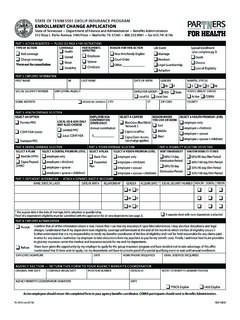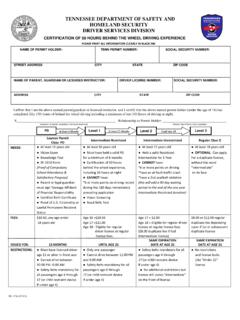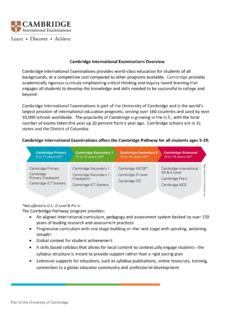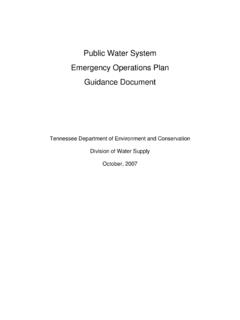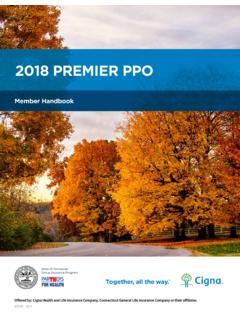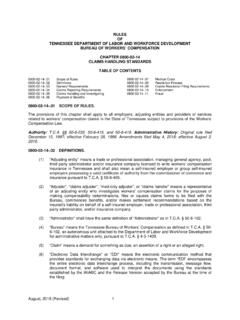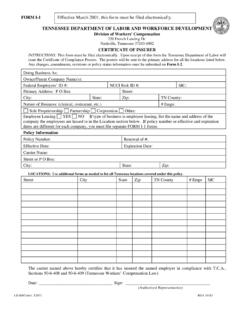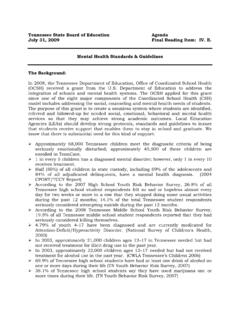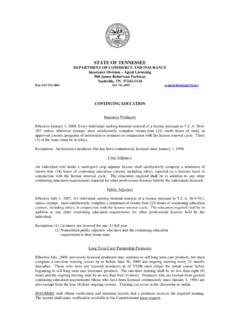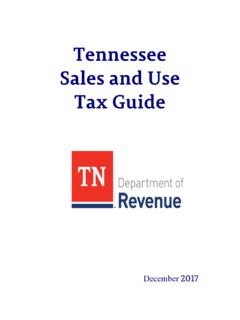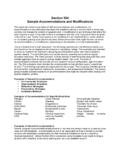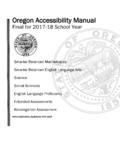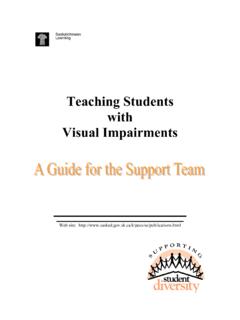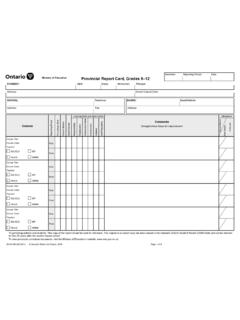Transcription of Determining Accommodations for Students with Disabilities
1 62 IEP and 504 Plan team members, including parents, must engage in a thoughtful process that determines the necessary Accommodations to facilitate the student's access to grade-level instruction and full participation in state and district assessments. The purpose of the manual is to guide team members in selecting appropriate Accommodations . Understanding Accommodations Accommodations are tools and procedures that provide equal access to instruction and assessment for Students with Disabilities . Access is the opportunity and ability for an individual to participate in the instruction, discussions, activities, products, and assessment provided to all Students within a public school. Accommodations are provided to level the playing field.
2 Without Accommodations , Students with Disabilities may not be able to access grade-level instruction or participate fully on assessments. They are intended to offset the effects of the disability and to provide Students with the opportunity to demonstrate knowledge and skills. Accommodations are intended to reduce, or even eliminate, the effects of a student s disability. They do not, however, reduce learning expectations and should not give a false picture of what a student knows and can do. Reliance on Accommodations should never replace appropriate and rigorous instruction in the content area. Informed decision making regarding Accommodations is critical for ensuring successful and meaningful participation of Students with Disabilities in instruction and assessments.
3 Ideally, Accommodations should be the same or similar across classroom instruction, classroom tests, and state and district tests. However, it is important to note that some Accommodations are only for use during instruction and cannot be used on state and district assessments. The IEP team should clearly distinguish between classroom and state Accommodations when making these decisions. A student who is provided an accommodation during classroom instruction that is not allowed on a state test should be provided opportunities to practice without the use of that accommodation . In order to make effective Accommodations decisions, the IEP and 504 teams should gather and review information about the student s present level of academic achievement, their functional performance in relation to the curriculum, and the supports the student requires during instruction and classroom assessment.
4 Team meetings could include discussions about providing the student equal learning opportunities and identifying practices and approaches intended to help the student overcome learning obstacles during instruction and assessment. Determining Accommodations for Students with Disabilities63 Accommodations are generally grouped into the following categories: Presentation ( , repeat directions, read aloud, use of larger bubbles on answer sheets): allows Students to access information in ways that do not require them to visually read standard print. These alternate modes of access are auditory, multi-sensory, tactile and visual. Response ( , mark answers in book, use reference aids, point, use of computer): allows Students to complete activities assignments and tests in different ways to solve or organize problems using some type of assistive device or organizer.
5 Timing/Scheduling ( , extended time, frequent breaks): increases the allowable length of time to complete a test or assignment and may also change the way the time is organized. Setting ( , study carrel, special lighting, separate room): changes the location in which a test or assignment is given or the conditions of the assessment setting. Accommodations vs. Modifications Accommodations are not the same as modifications. Accommodations are intended to lessen the effects on a student s disability; they are not intended to reduce learning expectations. Changing, lowering, or reducing learning expectations is usually referred to as a modification or alteration. Unlike Accommodations , consistent use of modifications can increase the gap between the achievement of Students with Disabilities and the grade-level expectations.
6 This may have a negative impact on the student s educational career, as the student may not continue to progress and be able to obtain a regular diploma. State and Federal Law Regarding Assessment Accommodations Current federal and state laws require Students who attend public schools to participate in annual testing in specific academic areas and grades outlined in the law, including Students with Disabilities . Requiring the inclusion of all Students with Disabilities in state and district-wide assessments helps ensure that schools, school districts, and states are held accountable for the achievement of these Students . These laws also require Students with Disabilities (those individuals covered under an IEP or Section 504 Plan) to be provided with appropriate Accommodations necessary to participate in these tests.
7 The use of Accommodations which invalidate the intended learning outcome does not give an accurate measure of the student s skills and could result in an invalidation of test scores which would count the student as non-proficient. All IEP and 504 Plan team members need to be familiar with state policies and guidelines regarding the use of Accommodations on state assessments. Making sound decisions about testing Accommodations requires all team members to know: The test (content, types of test questions, and testing conditions); The state s testing guidelines; and The state s accommodation guidelines. Who Decides All Students with Disabilities (those with an active IEP or 504 Plan) are entitled to the appropriate Accommodations that allow them to fully participate in state and district testing.
8 The student s IEP and 64 504 Plan team select the Accommodations for both instruction and assessments. Accommodations should be chosen on the basis of the individual student s needs, not on the basis of disability category, grade level, or instructional setting. Once selected, Accommodations should be used consistently for instruction and assessment. Each teacher and others responsible for the implementation of the Accommodations must be informed of the Accommodations that must be provided. Selecting Accommodations Determining necessary Accommodations should be part of the development of each IEP or 504 Plan. The following questions should be considered in the selection process: What are the student's learning strengths and needs?
9 How do the student s learning needs affect the achievement of the grade-level content standards? What specialized instruction does the student need to achieve the grade-level content standards? Next, discuss and review the Accommodations the student has already been using. Ask the following questions: What Accommodations is the student regularly using in the classroom and on tests? Has the student been willing to use the accommodation ? What is the student s perception on how well an accommodation has worked? What are the perceptions of the parents, teachers, and others about how the Accommodations appear to have worked? Have there been difficulties administering the selected Accommodations ?
10 The following are questions that IEP and 504 Plan teams should ask about assessment Accommodations : Is the student using any Accommodations during classroom instruction that will not be allowed when taking state or district-wide assessments? Because of the nature of certain Accommodations , they are only allowed for instruction, not testing. If a student is accustomed to using such Accommodations , the IEP team should make certain that the student understands that a particular accommodation won t be available during testing and work to find an acceptable accommodation that can support the student during testing in a comparable manner. Are the assessment Accommodations selected allowed for the specific assessment?
